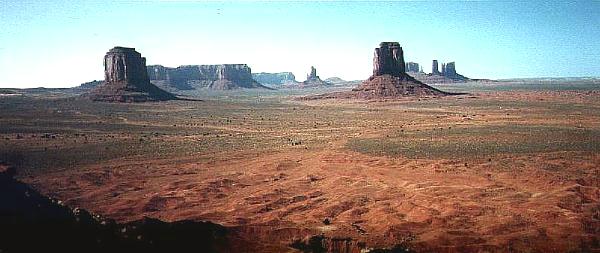
Managing succession
Lecture
graphics
- We usu. do not manage for late-successional ("climax") vegetation
for several reasons:
- we usu. do not know what it is (they are?), for any particular site
- historical records are poor
- photos and vegetation sampling started after large-
scale disturbances
- other communities may be desirable
- late-successional communities are not necessarily more
stable than mid- or early-successional ones
- rate and path of succession depend on soil properties
- therefore, mgmt. activities which influence soil
properties --> altered successional pathways
- return to late-successional veg. may not occur over
time frames relevant to mgmt.
- the concept of single-equilibrium communities that progress
steadily toward "climax" as a function of disturbance does
not apply in many communities
- alternative steady states exist
- stochastic events influence rate and path of succession
- discontinuous and irreversible transitions exist
- We can find many situations in which the successional stage
desired by land managers is different than that currently
found --> attempts to manipulate ("manage" succession)
- Forests: any properly-used silvicultural system represents an
attempt to hasten or retard succession
- simplest system (clearcut): returns forest to pioneer
stage; early-successional
spp. typically grow
faster than late-
successional ones
- partial cuts: retain seed source on site -->
accelerated establishment of early-
successional trees
- selection systems (uneven-aged stand mgmt): retain
seed source and site protection (from existing trees)
- pioneer hardwoods: weeds?
- Tropical dry forest (Guanacaste National Park, Costa
Rica):
- multi-storied forest has been converted to savanna or
grassland via timber harvest and conversion to
pastures
for livestock grazing
- fire frequency has increased --> positive feedback
of grassland --> grassland
- "natural" rate of succession to tropical dry forest
would be very slow because of frequent fires and long
distance to seed source of woody plants
- Janzen et al. have been trying to "speed up"
succession by:
- reducing fire frequency (active suppression
program and cattle grazing --> fuel
decrease)
- encouraging dispersal and establishment of
woody plants
- cattle grazing --> grass inteference
decrease
- cattle fed woody plant seeds
- active enforcement of anti-poaching laws
--> sustained populations of
native seed
dispersers
- planting seedlings in pasture centers
Rangelands: control of woody plants
- recognize that woody plants are not necessarily
detrimental, even if a mgmt. goal is herb production
- reduction in herb production may be minimal or
non-existent, depending on spp. and site
- even if woody plants reduce herb production,
removal of woody plants may provide only short-
term response by herbs
- may not be cost-effective
Previous
lectureNext lecture
